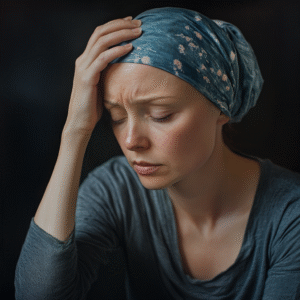Table of Contents
- Introduction: The Ongoing Quest for a Cure
- Nature of Cancer: Why It Defies Simple Solutions
- Comparing Cancer to Infectious Diseases
- Existing Anti-Cancer Drugs and Their Limitations
- Key Obstacles to a Universal Cure
- Progress in Research and Breakthrough Therapies
- Remission vs. Cure: Understanding the Difference
- Rising Survivorship and Improved Outcomes
- Complexities of Early Detection and Invasive Spread
- Promising Technologies and Future Directions
- Conclusion: Why Hope is Higher Now Than Ever Before
1. Introduction: The Ongoing Quest for a Cure
Cancer has long been considered one of the most dreaded diagnoses in modern medicine. Despite extraordinary advances in detection, targeted treatments, and supportive care, there is no universal “silver bullet” that can eradicate all forms of this disease. Patients and caregivers alike often wonder: Why haven’t we created a single drug that cures every type of cancer once and for all?
While certain tumors and specific cancer subtypes can be effectively treated or placed into long-term remission, a universal cure remains elusive. This article examines the intricate reasons behind cancer’s complexity, including the individual nature of each tumor, the defense mechanisms cancer cells have evolved, and the current progress that gives hope for the future.
2. Nature of Cancer: Why It Defies Simple Solutions
Cancer arises when the body’s own cells undergo genetic or epigenetic changes that push them into uncontrolled growth. Unlike many infectious diseases — which are typically caused by external pathogens like viruses or bacteria — cancer emerges from within, making it far more difficult to detect and eliminate without harming healthy tissues.
Moreover, there is no single disease called “cancer.” Instead, the term encompasses over 200 distinct types of malignancies, each with its own biological characteristics, rate of progression, and patterns of metastasis. Even within a single type (like breast cancer), multiple molecular subtypes respond differently to therapy. This biological diversity is a major hurdle to developing a one-size-fits-all cure.
3. Comparing Cancer to Infectious Diseases
Historically, humanity has triumphed over many infectious diseases through vaccination, antibiotics, and antiviral drugs. By identifying a specific pathogen and designing targeted interventions, we have drastically reduced mortality from diseases like smallpox, polio, and certain pneumonias.
Cancer doesn’t follow the same rules:
- Intrinsic vs. Extrinsic
Infectious diseases often involve external invaders the immune system can learn to recognize and destroy. Cancer cells are “self” cells turned rogue, so the immune system does not always treat them as foreign. - Immune Response
The human immune system has co-evolved to handle pathogens, but it struggles to detect and eradicate cancer cells, which can disguise themselves or suppress immune activity. - Variability
A single pathogen strain can be targeted by a vaccine or antibiotic. By contrast, cancer arises from intricate genetic changes unique to each patient and often unique even within a patient’s own tumor (intra-tumoral heterogeneity).
The often-cited success of the human papillomavirus (HPV) vaccine for preventing cervical cancer demonstrates that certain virus-linked cancers can be stopped in their tracks. However, most cancers do not stem from a single, easily targeted infectious agent, which is why we don’t have a universal prophylactic shot for all malignancies.
4. Existing Anti-Cancer Drugs and Their Limitations
It’s not accurate to say there are “no drugs for cancer.” In fact, there are hundreds of approved treatments, ranging from:
- Chemotherapy agents (toxic substances that kill rapidly dividing cells)
- Targeted therapies (molecules designed to block specific pathways in tumor cells)
- Hormonal therapies (for cancers sensitive to estrogen, testosterone, etc.)
- Immunotherapies (checkpoint inhibitors, CAR T-cell therapies)
However, effectiveness varies widely. Patient outcomes depend on tumor type, stage, genetic mutations, and overall health. Some cancers, like Burkitt lymphoma or Hodgkin lymphoma, respond well to available treatments, and long-term remission is common. Others remain resistant to the best current therapies.
5. Key Obstacles to a Universal Cure
5.1 Cancer Cells Are Our Own Cells
One of the biggest biological challenges is that cancer cells originate from healthy tissues. The immune system is more adept at fighting foreign invaders than mutated versions of the body’s own cells. Therapies that kill cancer cells may also damage healthy cells, leading to side effects.
5.2 Adaptive Resilience of Tumor Cells
Cancer cells can develop drug resistance through genetic evolution. When exposed to chemotherapy or targeted agents, the surviving cells may gain new mutations that protect them from future attacks. This adaptability can create aggressive, therapy-resistant tumors.
5.3 Individuality of Tumors
As British surgeon Leslie Foulds famously noted, “Every tumor is as unique as each person.” Two patients with what appears to be the same type of lung cancer may have vastly different genetic mutations and responses to treatment. This individual variation demands personalized approaches rather than a single universal drug.
5.4 Invasive Nature and Metastasis
Benign tumors can push healthy tissue aside, but malignant tumors often invade surrounding structures, making surgical removal difficult. They also spread via the bloodstream or lymphatic system, forming metastases in distant organs. This metastatic process complicates treatment and underscores the challenge of removing every cancer cell.
6. Progress in Research and Breakthrough Therapies
Despite these formidable barriers, medical science has made remarkable strides, particularly in the last few decades. Research is ongoing, and many experts believe we are on the threshold of even greater breakthroughs.
6.1 Targeted Therapies and Personalized Medicine
Advances in genomic sequencing have allowed us to identify specific mutations driving tumor growth. This approach leads to:
- Targeted drugs that block cancer-cell signaling pathways
- Biomarker-driven treatments that match therapies to a tumor’s unique genetic profile
- Combination treatments that address multiple mutation pathways at once
6.2 Immunotherapy and Cancer Vaccines
Immunotherapy aims to mobilize the patient’s own immune system against cancer cells. Breakthroughs include:
- Checkpoint inhibitors (e.g., PD-1, PD-L1, CTLA-4 blockers) that lift immune “brakes” so T-cells can attack tumor cells
- CAR T-cell therapy, in which a patient’s T-cells are genetically engineered to seek and destroy cancer
- Preventive vaccines for virus-linked cancers (HPV for cervical cancer, hepatitis B for liver cancer) and research into therapeutic vaccines that might train the immune system to target specific tumor antigens
6.3 Combined Approaches: Surgery, Radiation, and Chemotherapy
For many patients, the best outcomes arise from combined modalities:
- Surgery to remove localized tumors
- Radiation to destroy residual cancer cells
- Chemotherapy to address micrometastases or high-risk scenarios
- Targeted or immunotherapy for a more precise, long-lasting impact
This synergy exploits different vulnerabilities within the tumor, enhancing the chances of remission.
7. Remission vs. Cure: Understanding the Difference
Many patients live in remission for years, meaning no active signs of cancer. However, a single therapy that eradicates every tumor cell in every patient remains out of reach. Some oncologists hesitate to use the word “cure” prematurely, as microscopic cancer cells can lie dormant and resurge later.
Still, long-term remission — often measured in decades — is possible for increasing numbers of patients. This shift underlines how far treatment has evolved, even if a universal, one-time cure is not yet a reality.
8. Rising Survivorship and Improved Outcomes
According to data from the American Cancer Society and the World Health Organization:
- The overall cancer death rate in the United States has fallen significantly over the past 25 years, thanks to early detection, better therapies, and declining smoking rates.
- In the 1970s, only about 50% of people diagnosed with cancer survived five years or longer; today, that figure is closer to 67% and rising.
- More than 28 million cancer survivors currently live in the United States, a 20% increase in recent years.
Globally, over 30 million cancer patients survive the disease each year, many of whom go on to lead productive, fulfilling lives. Early diagnosis can improve survival rates up to 90% in certain cancers, highlighting the importance of screening and awareness.
9. Complexities of Early Detection and Invasive Spread
Even with advanced screening tools (MRI, CT, PET scans, genetic tests, and blood-based tumor markers), cancers can go undetected until they are large or have already spread. Once a tumor is deeply invasive or metastatic, curative treatment becomes far more challenging. Surgeons may struggle to remove all cancerous tissue without harming critical organs, especially in sensitive regions like the brain.
Further complicating matters, malignant cells often enter the lymphatic system, traveling to distant tissues. These rogue cells can lie dormant, later forming secondary tumors. It is this capacity for stealth and migration that makes cancer particularly elusive.
10. Promising Technologies and Future Directions
Researchers worldwide continue to explore cutting-edge solutions:
- Nanotechnology: Nano-scale drug delivery methods that target cancer cells specifically while sparing healthy tissue.
- Gene Editing (CRISPR): Potentially reprogramming cancer cells or enhancing immune cells to resist tumor growth.
- Next-Generation Sequencing: Rapid and more affordable genetic profiling of tumors, enabling ultra-personalized therapy.
- Liquid Biopsies: Blood tests that detect tumor DNA, guiding early intervention and monitoring treatment response without invasive procedures.
These innovations may not create a single universal cure, but they promise more precise, less toxic, and more potent ways to fight each patient’s unique cancer.
11. Conclusion: Why Hope is Higher Now Than Ever Before
A universal cure for cancer remains beyond the horizon for fundamental biological reasons: cancer cells are part of our own bodies, they adapt rapidly, and they vary enormously among patients. However, humanity has made extraordinary headway. Each year sees new therapies, deeper insights, and better outcomes.
For millions of patients worldwide, cancer has transformed into a chronic or manageable disease, with remission lasting years or even decades. Personalized medicine, immunotherapy, and advanced diagnostics have already revolutionized care for many subtypes of cancer once deemed untreatable.
Though we have yet to conquer cancer in a universal sense, the combined efforts of researchers, physicians, and patients continue to push boundaries, offering real optimism that more forms of cancer will become preventable, controllable, and — in some cases — effectively curable. Today, more than ever, there is genuine reason to hope for a future where a cancer diagnosis no longer feels like a life sentence, but rather a challenging condition we can increasingly understand, manage, and overcome.


